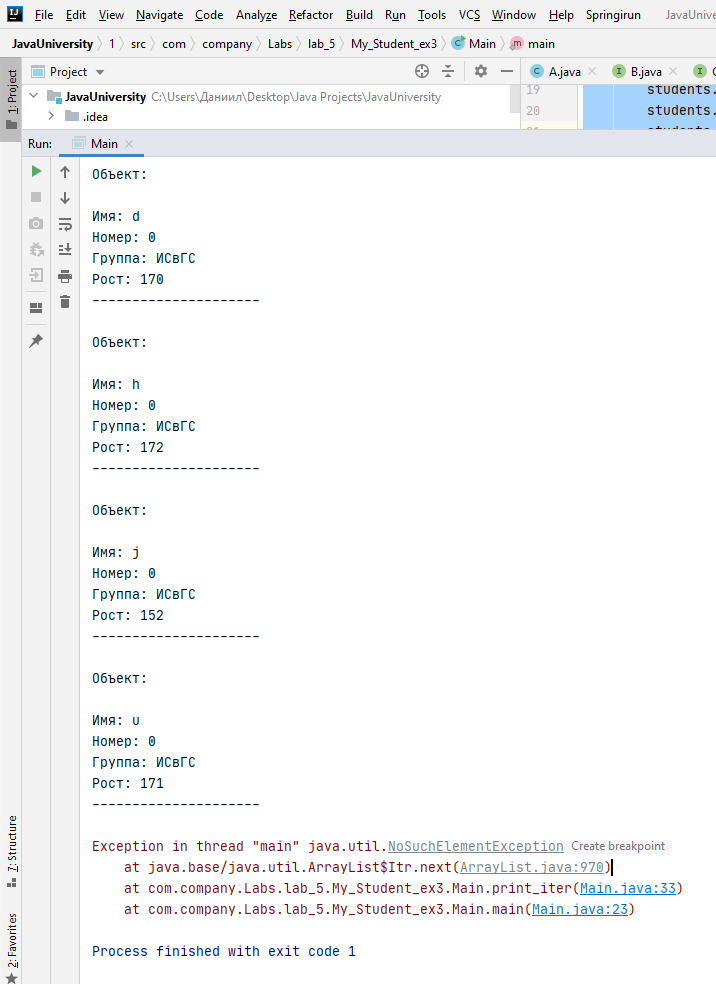Answer the question
In order to leave comments, you need to log in
NoSuchElementException error in Java Iterator, why did it occur (code in writing)?
package com.company.Labs.lab_5.My_Student_ex3;
import java.util.*;
public class Main {
public static void main(String[] args) {
//ąŚą░ą┤ą░ąĮąĖąĄ 3 (ą┐čĆąĄą┤ąĄą╗ą░ą╗ ą║ąŠą┤ ąĖąĘ čäą░ą╣ą╗ą░, čéą░ą║ ą┐čĆąŠčēąĄ, čüą╝čŗčüą╗ č鹊čé ąČąĄ)
ArrayList students = new ArrayList();
students.add(new Student(0, "Daniil", "ąśąĪą▓ąōąĪ", 182));
students.add(new Student(0, "a", "ąśąĪą▓ąōąĪ", 182));
students.add(new Student(0, "s", "ąśąĪą▓ąōąĪ", 180));
students.add(new Student(0, "d", "ąśąĪą▓ąōąĪ", 170));
students.add(new Student(0, "f", "ąśąĪą▓ąōąĪ", 183));
students.add(new Student(0, "h", "ąśąĪą▓ąōąĪ", 172));
students.add(new Student(0, "g", "ąśąĪą▓ąōąĪ", 192));
students.add(new Student(0, "j", "ąśąĪą▓ąōąĪ", 152));
students.add(new Student(0, "k", "ąśąĪą▓ąōąĪ", 182));
students.add(new Student(0, "u", "ąśąĪą▓ąōąĪ", 171));
students.add("String");
print_iter(students);
}
public static void print_iter(List list) {
Iterator iter = list.iterator();
while (iter.hasNext()) {
if (iter.next() instanceof Student) {
Student student_object = (Student) iter.next();
student_object.print();
} else if (iter.next() instanceof String) {
String str = (String)iter.next();
int legth = str.length();
System.out.println(legth);
}
}
}
}
Answer the question
In order to leave comments, you need to log in
For one check for the presence of the next element, you perform four transitions to the next elements.
Didn't find what you were looking for?
Ask your questionAsk a Question
731 491 924 answers to any question